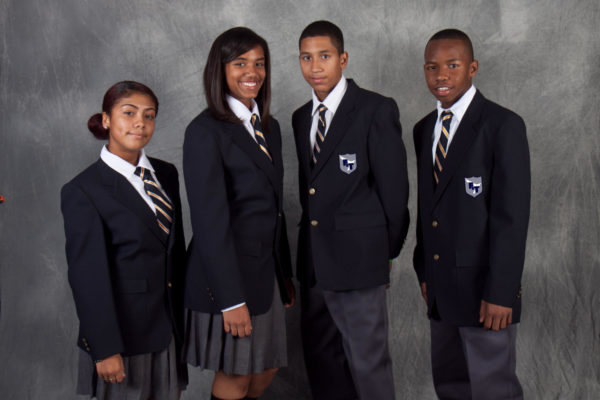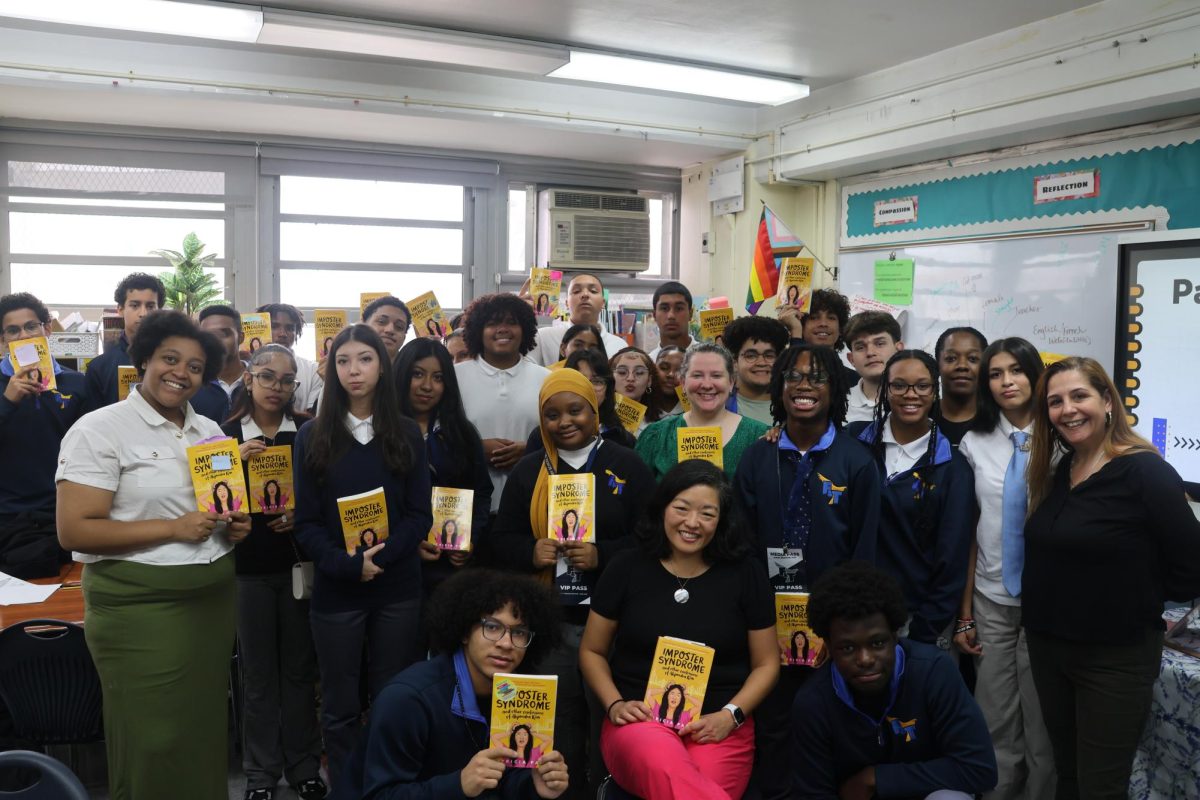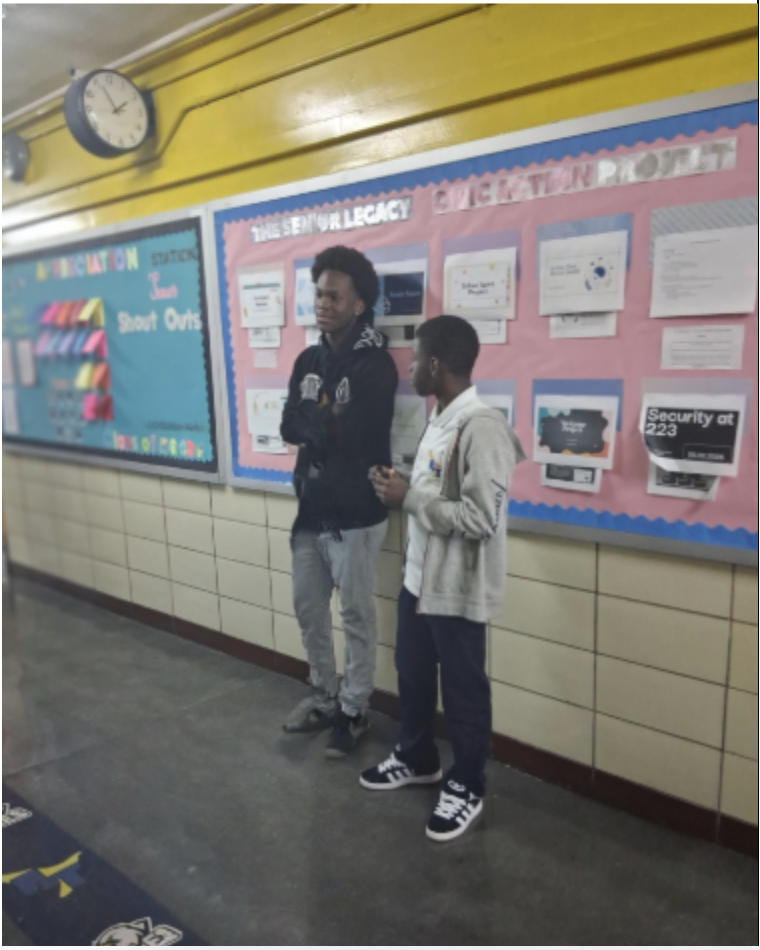The HS 223 Community has adopted a new, more relaxed uniform system
Since the school opened in 2014 , the uniform policy has been a 5 point system: black shoes, gray pants, white shirts as well as a sweater and tie with the school logo. This school year, the uniform policy has become more relaxed: students can now wear sneakers in any color, and ties are not required. Still, students must s
till wear gray pants and white- collared shirts. No Crocs, no open-toe shoes, and no hoodies are allowed.
In an interview, Vice Principal Downs said that the school is trying to become more flexible and allow some more individuality for students.
“We are trying to hear students while also staying in line with what we think makes for the safest, most productive learning environment,” she assured. But there are limits.

“Safe shoes, for if we need to evacuate the building quickly, is important to us. Making sure everybody’s safety comes above their footwear of choice,” she said. “One of the important things for us is with two schools in the building and with 650 kids in each school, it is important that we can identify which students go to which schools.”
In interviews, opponents of the dress code said they wished that they could wear different shoes and hoodies for comfort.
Ashley Joaquin ’25, shared, “I don’t really like the new uniform policy because I still always have someone telling me to take off my sweater or saying I can’t wear Crocs or Uggs. We could only wear shoes. What do you expect us to do if we are cold, shoes don’t protect our feet from being cold. Uggs do because of the fur and these new sweaters don’t do any justice.”
Some students still wish for the policy to be relaxed even more.
But dress codes do benefit schools, say defenders of the policies.
John Carrasco’ 25 said that a benefit of the uniform was to be able to, “Identify yourself since a person who enters the school without a uniform can infiltrate the school and no one would notice.”
“I like the new policy, it gives students more accessibility and freedom of choice. I know a tie isn’t for me,” said science teacher Mx. Kat
“Having a uniform is important for identification of students, I like uniforms because they foster unity and professionalism. If you look nice, people perceive you differently…Wearing a uniform to school is like going to play for the Yankees, you feel unified like you are a part of something. We are all on the same team.”
“When students are dressed professionally, they feel more professional and would tend to sit up a little bit straighter in chairs, listen a little bit more. Walking around after school they are in a tie and a collared shirt, and so they are looked at in a different regard than walking out in normal street clothes and casual clothes.” said computer science teacher, Ms Westphal . “I would like to see us get back to the old way of it, we used to have blazers be a part of it, it was a point of distinction for upperclassmen.
When asked about what she didn’t like about the old dress code, Delilah Baretto ’25 said, “I think it has happened to a lot of people, like everyday someone is going around telling us to take this off or sending us home because of uniform and I think that’s crazy because we don’t come to school for fashion we come to school to be educated and learn so sending someone home for what they are wearing us outrageous.”
In an attempt to focus on the comfort of students, the school is making sure that the new policy is enforced consistently while also being understanding and flexible.
“One of the other things that we saw was that if teachers and admin and school aides don’t enforce the uniform policy then it is used inequitably, and unfairly and so we are trying to make sure we are on the same page. That also means providing more uniforms, giving out more pants, giving out more sweaters, making sure kids have everything they need.” Ms Downs said. She also said that the new school uniform has been a success so far, there are fewer issues with students breaking the dress code for not wearing ties or shoes.
“Negativity does not foster good behavior, positive reinforcement does.” Mr Perez exclaimed. The school is trying to move away from disciplinary responses like parent meetings, exclusion from extracurricular activities and removal from the classroom. They are instead moving towards things like collaborative problem solving, conflict resolution and counseling.



















